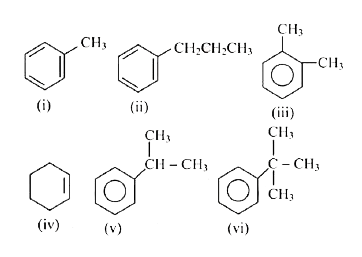How many of following belong to antibiotic ?
Crocin , penicillin , streptomycin , KMnO4,SO2
The correct Answer is:B
To determine how many of the given substances belong to the category of antibiotics, we will analyze each substance one by one:
1. Crocin:
- Crocin is primarily used as a pain reliever and is classified as an analgesic. It is effective for treating moderate pain, such as headaches. However, it does not have any antibacterial properties and is not used to treat bacterial infections.
- Conclusion: Crocin is NOT an antibiotic.
2. Penicillin:
- Penicillin is a well-known antibiotic that is effective against a variety of bacterial infections. It works by killing bacteria or inhibiting their growth. It is commonly used to treat infections such as pneumonia and other bacterial diseases.
- Conclusion: Penicillin IS an antibiotic.
3. Streptomycin:
- Streptomycin is another antibiotic that is used to treat severe bacterial infections. It is effective against certain types of bacteria and is often used in cases where other antibiotics may not be effective.
- Conclusion: Streptomycin IS an antibiotic.
4. KMnO4 (Potassium Permanganate):
- KMnO4 is often used as an antiseptic and can be effective against certain skin infections and fungal infections. However, it is not classified as an antibiotic because it does not specifically target bacteria in the same way that antibiotics do.
- Conclusion: KMnO4 is NOT an antibiotic.
5. SO2 (Sulfur Dioxide):
- Sulfur dioxide is a chemical compound that is primarily used as a preservative and antioxidant in food. It is not used as a medication and can be harmful to humans. It does not have any antibacterial properties and is not used to treat infections.
- Conclusion: SO2 is NOT an antibiotic.
Now, let’s summarize the findings:
- Antibiotics identified: Penicillin and Streptomycin.
- Total number of antibiotics: 2.
Final Answer: 2 substances belong to the category of antibiotics.
- Crocin is primarily used as a pain reliever and is classified as an analgesic. It is effective for treating moderate pain, such as headaches. However, it does not have any antibacterial properties and is not used to treat bacterial infections.
- Conclusion: Crocin is NOT an antibiotic.
- Penicillin is a well-known antibiotic that is effective against a variety of bacterial infections. It works by killing bacteria or inhibiting their growth. It is commonly used to treat infections such as pneumonia and other bacterial diseases.
- Conclusion: Penicillin IS an antibiotic.
- Streptomycin is another antibiotic that is used to treat severe bacterial infections. It is effective against certain types of bacteria and is often used in cases where other antibiotics may not be effective.
- Conclusion: Streptomycin IS an antibiotic.
- KMnO4 is often used as an antiseptic and can be effective against certain skin infections and fungal infections. However, it is not classified as an antibiotic because it does not specifically target bacteria in the same way that antibiotics do.
- Conclusion: KMnO4 is NOT an antibiotic.
- Sulfur dioxide is a chemical compound that is primarily used as a preservative and antioxidant in food. It is not used as a medication and can be harmful to humans. It does not have any antibacterial properties and is not used to treat infections.
- Conclusion: SO2 is NOT an antibiotic.
- Antibiotics identified: Penicillin and Streptomycin.
- Total number of antibiotics: 2.
Topper's Solved these Questions
- BOOK - FIITJEECHAPTER - CHEMISTRY IN EVERY DAY LIFE EXERCISE - ASSIGNMENT PROBLEMS (OBJECTIVE) Level - II ( Assertion Reason Type Questions)2videos
CHEMISTRY IN EVERY DAY LIFE
- BOOK - FIITJEECHAPTER - CHEMICAL KINETICS AND RADIOACTIVITYEXERCISE - Exercise9videos
CHEMICAL KINETICS AND RADIOACTIVITY
- BOOK - FIITJEECHAPTER - CONCEPT OF ACIDS AND BASESEXERCISE - SINGLE INTEGER ANSWER TYPE QUESTIONS4videos
CONCEPT OF ACIDS AND BASES
Similar Questions
Knowledge Check
- Question 1 - Select One or More
Passage 2
Antibiotics are the chemical substances which are produced by microorganisms like bacteria, fungi and moulds. Antibiotics can inhibit the growth or even destroy other microorganisms. Now-a-days, synthetic antibiotics are also available. The first successful antibiotic produced was penicillin. The antibiotics may be either bacteriocidal (kills the organism in the body) or bacteriostatic (inhibits the growth of organism). Ampicillin and amoxycillin are modified antibiotics. Broad spectrum antibiotics are effective against several types of harmful microorganisms.
4. Which of the following antibiotics is/are the modification of penicillins ?AOfloxacinBAmpicillinCAmoxycillinDTetracycline - Question 2 - Select One
A fungus that produce an antibiotic penicillin belongs to this class
ADeuteromycetesBAscomycetesCBasidiomycetesDPhycomycetes
How many of the following are antihistamine drugs ?
Salvarsen, streptomycin, promethazine, iproniazid, terfenadine, diclofenac sodium, bromopheniramine, lansoprazole, diphenyl hydramine.View SolutionHow many of the following are antibiotics ?
Chloramphenicol, chloroxylenol, streptomycin, saccharin, primaquin, penicillin, penicillin, ampicillin, equanil, tetracyclin.View SolutionHow many of the following
compunds will give Benzoic
acid on treating with acidic
KMnO4
 View Solution
View SolutionWhich of the following pairs acts as bacteriostatic antibiotics?
Ofloxacin, Penicillin OR Erythromycin, Chloramphenicol.View SolutionWhat are antibiotics ? Distinguish between narrow spectrum and broad spectrum antibiotics. Classify the following into bactericidal bacteriostatic antibiotics :
Tetracycline, Penicillin, Ofloxacin and Chloramphenicol.View SolutionCircle the odd one out among the following: Streptomycin, penicillin, erythromycin, gentamicin
View Solution

